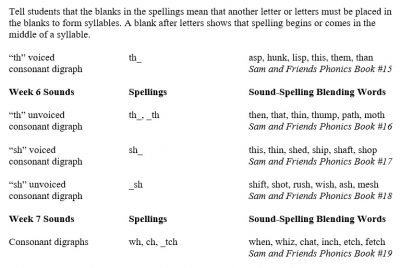Reading Fluency Norms
As we all know, reading fluency is highly correlated with reading comprehension. Of course it makes so much sense that if readers can read quickly with expression, accuracy, and attention to punctuation, they will more likely understand what they read than if they don’t have these skill sets. Now it is certainly true that veteran teachers and reading specialists will no doubt have run across an exception or two in their careers. I have tested children and adults with brilliant reading fluency, but poor comprehension. Conversely, I have run across slow, stumbling, readers with monotone expression who seem to understand and remember every single detail.
This being said, reading fluency assessments are universally recognized as important initial looks into how a reader processes text. Unlike other measures, such as comprehension and vocabulary assessments, reading fluency assessments give the classroom teacher and diagnostician not only qualitative, but also quantitative data. We love numbers!
As an elementary reading specialist in a large school district in Northern California, I learned (with my colleagues) the value of comparing student fluency scores in grade-level text to grade-level norms. We had two research studies on group norms for Words Read per Minute (WRPM) to rely upon: those by University of Oregon researchers, Hasbrouck and Tindal (1992, 2006). However, these studies provided data for students from grades 2–5.
When I moved into the middle school setting as an ELA and reading intervention teacher, I (and others) was tough out of luck. No group norms for grades 6–8. Of course, I still designed reading fluency assessments and helped students practice reading fluency, but I was flying blind. Until 2006 when the same two researchers added on grades 6–8 reading fluency norms. Woo hoo!
The same two researchers, Hasbrouck and Tindal, have now (2017) have replicated their initial study for grades 1–6. Following is the latest data, i.e. 2017 for grades 1–6 and 2006 for 6–8. Afterwards, read the concise explanation of the tables by Jan Hasbrouck. Note the “middle school slump” in the second chart.

The Science of Reading Intervention Program
The Science of Reading Intervention Program: Word Recognition includes explicit, scripted instruction and practice with the 5 Daily Google Slide Activities every reading intervention student needs: 1. Phonemic Awareness and Morphology 2. Blending, Segmenting, and Spelling 3. Sounds and Spellings (including handwriting) 4. Heart Words Practice 5. Sam and Friends Phonics Books (decodables). Plus, digital and printable sound wall cards and speech articulation songs. Print versions are available for all activities. First Half of the Year Program (55 minutes-per-day, 18 weeks)
The Science of Reading Intervention Program: Language Comprehension resources are designed for students who have completed the word recognition program or have demonstrated basic mastery of the alphabetic code and can read with some degree of fluency. The program features the 5 Weekly Language Comprehension Activities: 1. Background Knowledge Mentor Texts 2. Academic Language, Greek and Latin Morphology, Figures of Speech, Connotations, Multiple Meaning Words 3. Syntax in Reading 4. Reading Comprehension Strategies 5. Literacy Knowledge (Narrative and Expository). Second Half of the Year Program (30 minutes-per-day, 18 weeks)
The Science of Reading Intervention Program: Assessment-based Instruction provides diagnostically-based “second chance” instructional resources. The program includes 13 comprehensive assessments and matching instructional resources to fill in the yet-to-be-mastered gaps in phonemic awareness, alphabetic awareness, phonics, fluency (with YouTube modeled readings), Heart Words and Phonics Games, spelling patterns, grammar, usage, and mechanics, syllabication and morphology, executive function shills. Second Half of the Year Program (25 minutes-per-day, 18 weeks)
The Science of Reading Intervention Program BUNDLE includes all 3 program components for the comprehensive, state-of-the-art (and science) grades 4-adult full-year program. Scripted, easy-to-teach, no prep, no need for time-consuming (albeit valuable) LETRS training or O-G certification… Learn as you teach and get results NOW for your students. Print to speech with plenty of speech to print instructional components.
“Oral reading fluency norms identify performance benchmarks at the beginning (fall), middle (winter), and end (spring) of the year. An individual student’s WCPM score can be compared to these benchmarks and determined to be either significantly above benchmark, above benchmark, at the expected benchmark, below benchmark, or significantly below benchmark. Those students below or significantly below benchmark are at possible risk of reading difficulties. They are good candidates for further diagnostic assessments to help teachers determine their skill strengths or weaknesses, and plan appropriately targeted instruction and intervention” (Hasbrouck, 2010). http://www.brtprojects.org/wp-content/uploads/2017/10/TechRpt_1702ORFNorms_Fini.pdf
*****THE FREE READING FLUENCY ASSESSMENT*****
The “Pets” diagnostic expository fluency passage is leveled in a unique pyramid design: the first paragraph is at the first grade (Fleish-Kincaid) reading level; the second paragraph is at the second grade level; the third paragraph is at the third grade level; the fourth paragraph is at the fourth grade level; the fifth paragraph is at the fifth grade level; the sixth paragraph is at the sixth grade level; and the seventh paragraph is at the seventh grade level. Thus, the reader begins practice at an easier level to build confidence and then moves to more difficult academic language. As the student reads the fluency passage, the teacher will be able to note the reading levels at which the student has a high degree of accuracy and automaticity. Automaticity refers to the ability of the reader to read effortlessly without stumbling or sounding-out words. The 383 word passage permits the teacher to assess two-minute reading fluencies (a much better measurement than a one-minute timing).
Get the The Pets Fluency Assessment FREE Resource:
![]()
Get the SCRIP Comprehension Strategies FREE Resource:
![]()
Get the Diagnostic ELA and Reading Assessments FREE Resource:

















